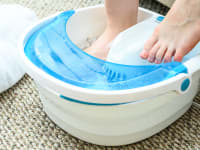Can air purifiers make your life easier during allergy season?
Eliminate dust and pollen before you start sneezing.
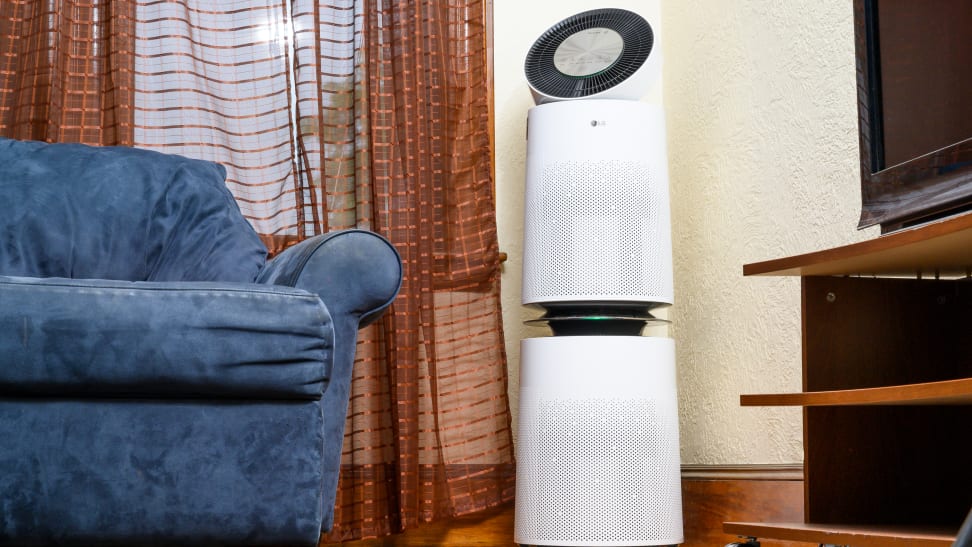 Credit:
Reviewed.com / Betsey Goldwasser
Credit:
Reviewed.com / Betsey Goldwasser
Recommendations are independently chosen by Reviewed's editors. Purchases made through the links below may earn us and our publishing partners a commission.
Airborne allergens are a pain, literally. Whether it's ragweed, pet dander, or some other tiny speck of matter floating around in the air, these particles can get into your system and make you miserable. Symptoms vary widely from sneezing and congestion to headaches, shortness of breath, and itchy eyes. Isn't it fascinating that, for those of us with pollen, plant, and dander allergies, that we essentially have to spend time combating the symptoms of our bodies overreacting to tiny microscopic particles? It's kind of humbling (and annoying), if you think about it.
While there are a ton of potential allergy remedies out there, we decided to see if air purifiers, one of the more expensive solutions, could actually help reduce airborne allergens, along with all of the other pollutants that they, in theory, remove from the air.
After extensive testing both in our labs and in peoples' homes, we determined that can noticeably reduce indoor air pollutants, including allergens. As you might expect, though, some air purifiers work better than others. If you suffer from indoor allergies, and are considering purchasing an air purifier, here are some questions you might be pondering:
• Should I get a personal air purifier, or a whole-room air purifier, or both?
• How do I know a specific air purifier can remove allergens?
• What setting should I use on the air purifier?
• How long should I run the air purifier?
• How can I help my air purifier to do its job effectively?
• How can I monitor my indoor air quality?
How do air purifiers work?
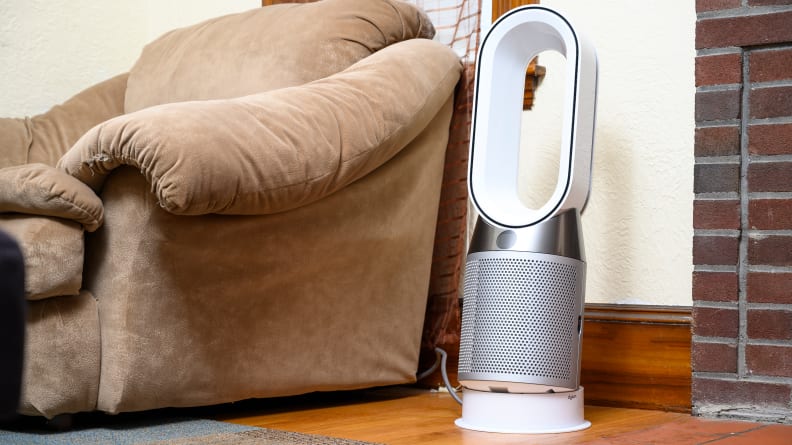
Air purifiers, like the Dyson Pure Hot+Cool, draw air in using a series of fans, send it through mechanical, chemical, and electrical filters, and then pass the clean air back out into the room.
Air purifiers are analogous to air conditioners—they draw air in using a series of fans, condition the air somehow, and then blow the changed air back out into the room. In the case of air conditioners, the air is cooled, but with air purifiers, the air moves through a number of filters and is consequently much cleaner than it was when it first entered the air purifier.
Physical filters catch and retain pollutants like a net, while chemical filters change the chemical structure of the particles to make them benign (or easier to trap), and electric filters cause pollutants to be attracted to and trapped on charged plates.
Allergens are a common type of air pollutant that air purifiers can remove. Other pollutants include smoke, fragrances, food smells, mold spores, and more.
Should I get a personal air purifier, or a whole-room air purifier, or both?
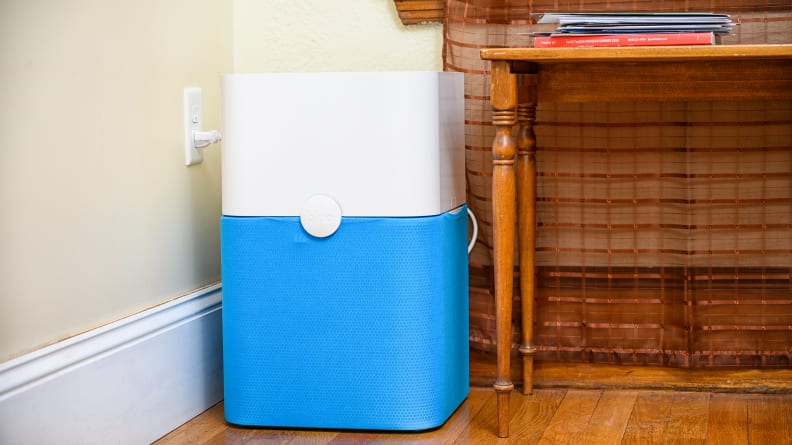
Whole-room air purifiers, like the Blue Pure 211+, are less portable than personal air purifiers, but are more effective at removing pollutants from larger spaces.
As you might expect, there are pros and cons for both types of air purifiers. Personal air purifiers are smaller, less expensive, and more portable. While personal air purifiers can be effective in some cases, they're typically less powerful and contain fewer filtration mechanisms than their whole-room counterparts, so more air contaminants may stay in the air. Also, you need to be specifically breathing the cleansed air that the portable air purifier generates, so you'll need to keep it close by. However, if you want to take it with you to a friend's house or a public space, most personal air purifiers fit in a tote bag.
Whole-room air purifiers, on the other hand, are larger, more expensive, and often more difficult to move around. However, they're more powerful and they often contain a number of filtration methods that work together to effectively clean a room's air in a few hours. If you spend most of your time in a one particular space in your home or office, it might be worth it to invest in a whole-room air purifier to that makes that area an allergen-free haven. On the other hand, if your allergies are very mild, or if you're on the go a lot, a personal air purifier might make more sense.
In an extreme case, where you need to keep the air extremely clean in many different rooms, there are special filters designed to help filter air in existing air ventilation, heating, and air conditioning systems.
How do I know a specific air purifier can remove allergens?
If allergies are the main reason you're looking at air purifiers, you should look for the presence of a HEPA or True HEPA filter. While, according to the EPA, there are no requirements that need to be met for a brand to claim that a filter is a HEPA filter in a consumer product (there are requirements on HEPA air filters in industrial settings), there seems to be general agreement that a True HEPA/HEPA filter can remove 99.97% of particles that have a diameter of 0.3 microns (for reference, there are 10,000 microns in a centimeter).
Most airborne allergens have diameters in the range of 0.1-100 microns, with pet dander on the low end and plant allergens on the high end. True HEPA and HEPA filters that meet the aforementioned standard will be able to remove most of the airborne allergens in your air. However, if pet dander is problematic for you, consider looking for air purifiers with multiple filtration methods, as well as claims that mention removing and air pollutants as small as 0.1 microns.
What setting should I use on the air purifier?
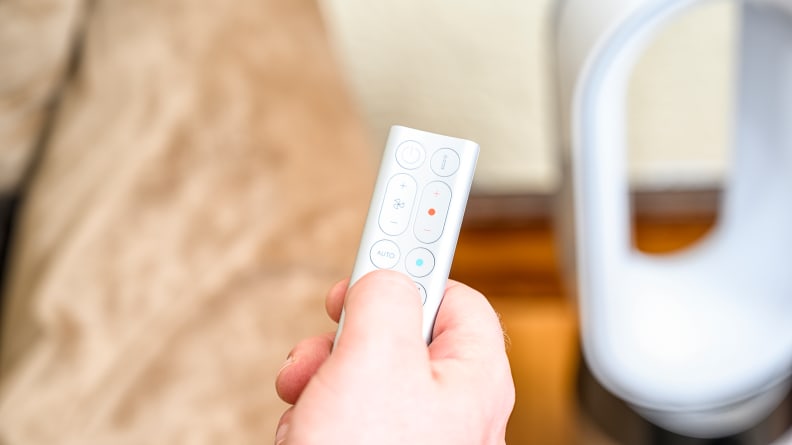
For the fastest air cleaning, be sure to use the highest fan setting on your air purifier that you can stand, noise-wise.
Some air purifiers will have specific settings for allergens—if you see such a setting, use it. Depending on the air purifier, it may get louder while it operates on this setting, since filtration methods that do not operate on lower speeds may be called into play. Also, with a specific air quality issue like allergens, the air purifier wants you to be able to remove the allergens quickly, rather than have you deal with watery eyes and constant sneezing while the air purifier works at a lower setting.
If the air purifier does not have an allergen setting, use the highest setting that you can stand, noise-wise. Some air purifiers have smart home capabilities or allow you to set operating schedules ahead of time. If you're out and about, and can start your air purifier while you're away, do so. We recommend using the air purifier on its general or average cleaning setting, since that setting represents the balance between air cleaning efficiency and a long filter lifespan. This way, your air purifier can work while you're away, and you can come home to a room with cleansed air.
How long should I run the air purifier?
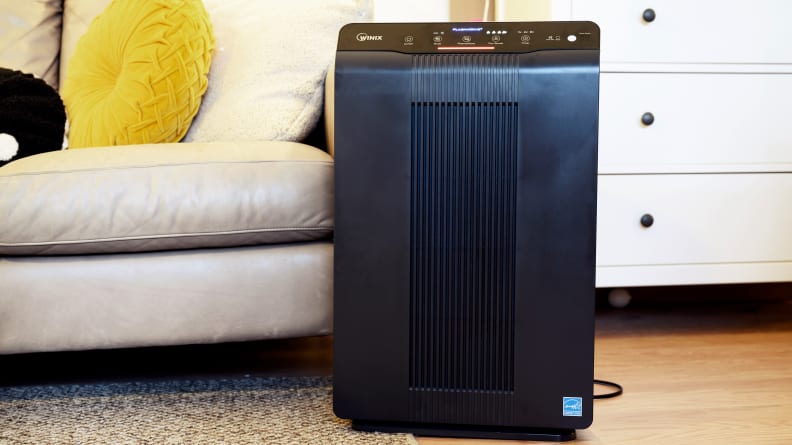
The Winix 5500-2 air purifier has Clear Air Delivery Rate (CADR) values exceeding 230 cubic feet per minute, which should help to remove pollutants from your air quickly.
The speed at which the air purifier can replace allergen-ridden air with clean air depends on two things: the room size and the Clear Air Delivery Rate (CADR).
Air purifiers are typically rated for a certain room size (for instance, 300 sq. ft. is roughly the size of a large bedroom or a small- to medium-sized living room), so have a room in mind when you're purchasing an air purifier so that you can get the right size. An air purifier rated for less than 100 sq. ft. is going to take hours to filter the air in a normal-sized bedroom, and it may not be entirely effective. On the other hand, an air purifier rated for more than 500 sq. ft. might be overkill for a normal-sized bedroom.
As for the CADR, this number is in units of cubic feet per minute, and represents how quickly an air purifier can bring air pollutant levels down to what the levels would have been if you'd added completely clean air to the room. The higher the number (CADR values go as high as 400-450 cubic feet per minute), the faster the CADR, meaning the less time it will take to clean the air in a room. However, know that the CADR values are calculated when an air purifier is operating at its highest fan speed; often, the highest fan speed is the loudest and most annoying. Lower fan speeds will be less disruptive, but will take longer to cleanse the air.
Long story short, an air purifier that is a good match for the room size, used on its highest setting, should be able to clear the room of allergens in a few hours. If it's not a good size match or used on a lower settings, it may take many more hours to completely clear the room of airborne allergens.
How can I help my air purifier to do its job effectively?
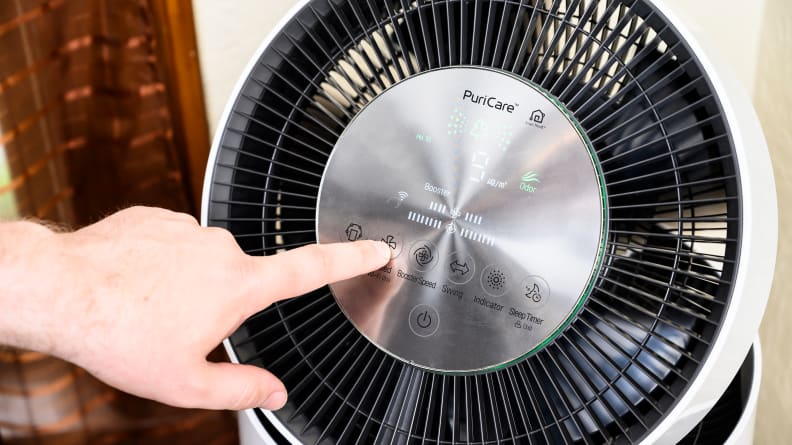
If you purchase an air purifier, like the LG AS560DWR0 shown here, make sure to clean or replace its filters regularly so that the air purifier is always performing at its best.
Here are three tips to make it easier for your air purifier to remove allergens from your air:
Close all windows and minimize the amount of air coming in from outside. If allergens are continuing to make their way into your home from the outside, that increases the length of time that the air purifier will have to run to eradicate airborne allergens. With your windows closed, the air purifier only has to clean the existing air in the room, without dealing an additional source of pollen and dander.
Maintain your air purifier. Most air purifiers require you to replace or clean the filters every 6 to 12 months. As the filters start to clog, your air purifier will start to struggle more and more when it comes to removing allergens from your air. Regular filter maintenance will ensure that your air purifier is always working at its best.
Use your air purifier. This is pretty obvious, but people who buy air purifiers sometimes don't turn them on because the fan noise can prove to be disruptive during conversation or quiet times. Most air purifiers with wi-fi or Bluetooth connectivity can be set to run on a schedule, or turned on while you're away from home. While you're home, use a lower fan setting, and if possible, use higher fan settings when you can stand it.
How can I monitor my indoor air quality?

The Dyson Pure Hot+Cool air purifier has a display that allows you to monitor air pollutant concentrations.
If you're still on the fence as to whether you need an air purifier or not, consider investing in an air quality monitor. These products can give you specific information about the quantities and types of air pollutants in your home, and help you decide whether it's worth it to invest in a whole-room air purifier.
Hopefully we've given you all the information you need to decide if an air purifier fits in your arsenal of weapons for fighting allergies. Air purifiers and other allergy remedies may one day allow us to relax in our homes without rushing to the tissue box or the medicine cabinet when pollen or pet dander show up.
More articles you might enjoy
• 10 secrets for surviving allergy season
• Your vacuum is making your allergies worse—here's how to stop it
• Spring cleaning? Here's how to get rid of stubborn pet hair


